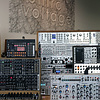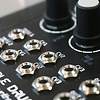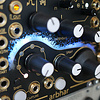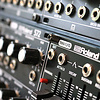Basic Synth 2: Filters
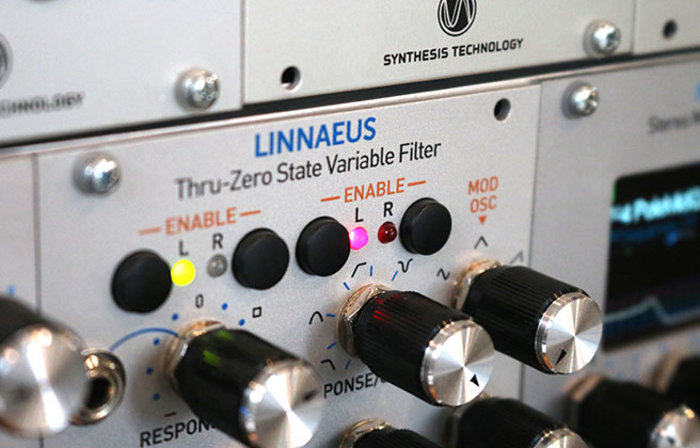
In our first post in the Basic Synth series we learned all about oscillators, waveforms, and how sound is generated. Now let’s talk about filters.
Imagine you were to sing a note and notice the natural timbre of your voice. While singing, place your (clean!) hands around your mouth as if you were calling to someone from across the room - observe the timbre of your voice. While still singing (out of breath, I know), slowly close your hands around your mouth as if you were blocking the sound altogether - notice the timbre of your voice now.
You should have noticed that your voice seemed lower in register than when you first started singing. Basically, you are using your hand to filter out high harmonic content, allowing the low harmonic content to pass through.
You have effectively become a low pass filter. Congratulations!
Subtractive synthesis is a process in which harmonic content is attenuated from the original signal, usually by running the signal through a filter. The filter determines the character of the synthesizer. Classic synths have very similar oscillator circuits, but very different filter circuits.
In this post, we're going to talk about how filters work and the different functions they can perform.
Cutoff Frequency & Filter Types:
A traditional VCF (voltage-controlled filter) defines a cutoff frequency and resonance level. Depending on the filter type, harmonics above or below (or both) the cutoff frequency are attenuated. The cutoff frequency marks the point at which harmonics are attenuated by -3dB (known as the -3dB down point).
Here is a list of the classic filter types:
Low Pass Filter - LPF: Attenuates higher harmonic content that is above the cutoff frequency, allowing the lower harmonic content to pass.
High Pass Filter- HPF: Attenuates lower harmonic content that is below the cutoff frequency, allowing the higher harmonic content to pass.
Band Pass Filter - BPF: Attenuates higher and lower harmonics outside of the centre frequency, allowing harmonic content within a specific band to pass
Band Reject Filter - BRF: Attenuates a very narrow section of harmonic content inside the stop band set by the centre frequency, allowing everything outside the stop band to pass. This is often referred to as a Notch Filter.



(Images courtesy of Bob Moog Foundation)
Examples of single-mode filters:
There are also multi-mode filters that will have one or multiple filter types available simultaneously:
Resonance:
The resonance (also known as emphasis, feedback, or Q) of the filter sets the amplitude of the cutoff frequency, accentuating a small frequency band. Electrically, this is done by creating a feedback loop between the filter's output and input. Sonically, it adds more presence to the input signal. This is how we add squelch to the bass and lead lines and what we love about the Roland TB-303.
Often, both cutoff frequency and resonance parameters will be under voltage control, however resonance sometimes does get excluded in more East-Coast style filters.
Examples of filters that have CV over resonance:
Resonance can also be pinged by a rising-edge signal, like a gate or a trigger. This is a great feature when making kick drums:

Slope:
The slope (or pole) of the filter determines how steep the attenuation is across the frequency spectrum. For instance, the infamous Moog Ladder Filter is a -24db/Octave (or 4 Pole) filter and the Instruō I-ō47 is a -18dB/Octave (or 3 Pole) filter. This means that within the harmonic octave span between the cutoff frequency and one octave above the cutoff frequency, the attenuation will span to -24dB on the Ladder Filter and span to -18dB on the I-ō47.
Examples of filters that can even modulate between slopes:
Lowpass Gates - LPG:
Lowpass gates are from the west-coast mindset of synthesis and functions as both a lowpass filter and a VCA (voltage-controlled amplifier).
Electrically, the signal is sent through a vactrol. The vactrol gets pinged by a rising-edge signal, like a gate or trigger. This allows sound to pass, but only for a moment. Once pinged, sound will have a natural decay in both harmonic content and amplitude to the point of near-silence. This is the module used for Buchla-style bongo hits. Sometimes, LPGs can also be opened with external control voltage such as LFOs and envelopes.
Examples of lowpass gates:
Parametric EQ:
Parametric EQ modules let you attenuate (cut) or amplify (boost) harmonic content with 2 or more intersecting bandpass filters and high and low shelves. You’ll often see these types of circuit on mixing boards.
Examples of parametric EQ modules:
Analog or Digital:
Filters can be both analog or digital. Both have their own characteristics and uses. Analog filters may have what people call a “warmer character,” and like analog oscillators, they have different inconsistencies that can be pleasing and interesting.
Digital filters can add everything from clean computation to noisey distortions from aliased frequencies. They can also perform comb filtering.
Comb filtering is actually created by a delay line at a very fast rate. The frequency of the comb filter is the rate of the delay line. The resonance of the comb filter is the feedback amount of the delay line. It’s great for creating weird-o freaked out metallic drum hits!
Examples of analog filters:
Examples of digital filters:
- 2hp Comb
- Endorphin.es Squawk Dirty To Me
- Industrial Music Electronics Bionic Lester MKIII
- Qu-Bit Electronix Prism
- Mannequins Three Sisters
Resonant Lowpass Filters:
Visit the Basic Synth 1: Oscillators post to learn about resonant lowpass filters as oscillators.
Thanks again for checking out our blog and learning modular synthesis with us!
Feel free to comment with any questions, ideas, or opinions!
Next article in the Basic Synth series: Basic Synth 3: VCA
 All Modular Brands
All Modular Brands
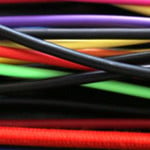 All Patch Cables
All Patch Cables
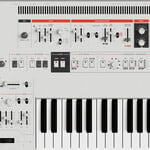 Synthesizers
Synthesizers
 Controllers
Controllers
 Drum Machines
Drum Machines
 Sequencers
Sequencers
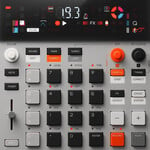 Samplers
Samplers
 Soundmakers
Soundmakers
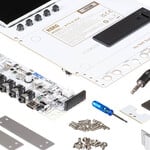 DIY
DIY
 Effects
Effects
 Cables
Cables
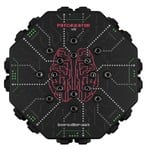 Audio/MIDI
Audio/MIDI
 Video
Video
 Music/Media/Gifts
Music/Media/Gifts
 Accessories
Accessories
 Used
Used
 Vintage
Vintage
 DEALS
DEALS
 Modular
Modular
 Synthesizers
Synthesizers
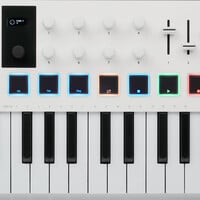 Controllers
Controllers
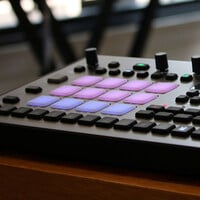 Drum Machines
Drum Machines
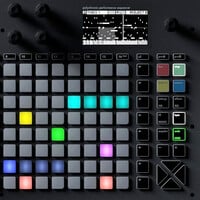 Sequencers
Sequencers
 Samplers
Samplers
 Soundmakers
Soundmakers
 DIY
DIY
 Effects
Effects
 Cables
Cables
 Audio/MIDI
Audio/MIDI
 Video
Video
 Music/Media/Gifts
Music/Media/Gifts
 Accessories
Accessories
 Used
Used
 Vintage
Vintage
 DEALS
DEALS


